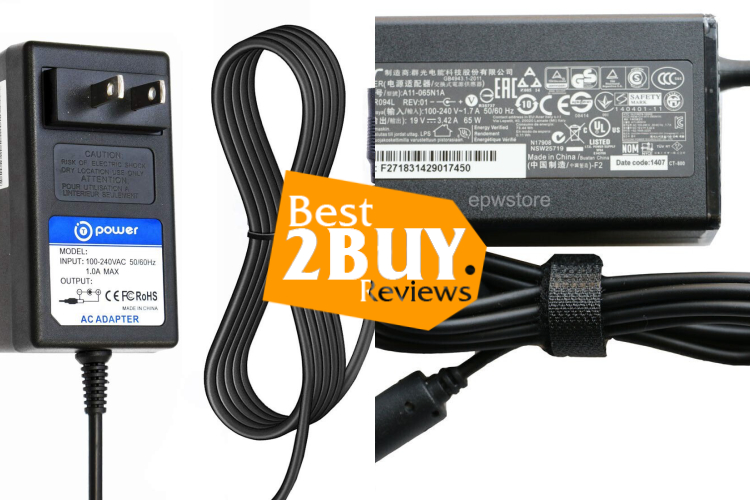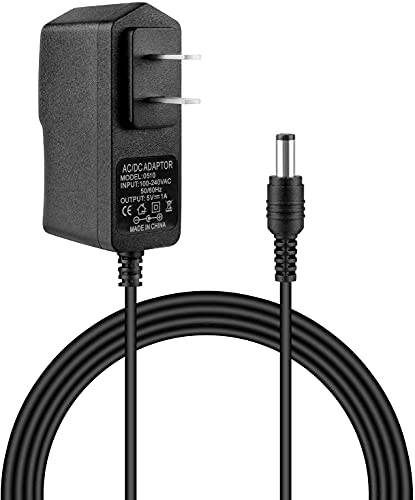How to Choose the AC Adapters
Are you looking for an AC adapter for your electronic device? With a wide variety of shapes, sizes and wattages, selecting the right power supply for your device can be a daunting task. Fortunately, Amazon offers a great selection of AC adapters at competitive prices. Whether you need a laptop power adapter or a power supply for a smartphone, you can find the perfect AC adapter to meet your needs
- 1. What’s AC adapter?
- 2. Main component of AC adapters
- 3. Benefits of AC adapter
- 3.1. Versatility
- 3.2. Portable Power
- 3.3. Protection
- 3.4. Energy Efficiency
- 3.5. Convenience
- 3.6. Compatibility
- 4. How to use effectively AC adapters?
- 5. How to choose AC adapters?
- 5.1. Voltage
- 5.2. Current (Amperage)
- 5.3. Connector Type
- 5.4. Polarity
- 5.5. Wattage
- 5.6. Safety and Certification
- 5.7. Brand and Quality
- 5.8. Reviews and Recommendations
- 5.9. Portability and Travel Compatibility
- 6. In conclusion
What’s AC adapter?
An AC adapter, also known as a power adapter or charger, is a device that converts alternating current (AC) from a power outlet into direct current (DC) suitable for powering electronic devices. It is commonly used to provide power to devices such as laptops, smartphones, tablets, gaming consoles, and other portable electronic devices.

Main component of AC adapters
AC adapters typically consist of two main components: a transformer and a rectifier. The transformer converts the voltage from the power outlet to the required voltage for the device, while the rectifier converts the AC current to DC current. Some adapters may also include additional circuitry for voltage regulation, filtering, and protection against power surges.
The AC adapter usually has two main parts: a power cord that plugs into a power outlet, and a connector or cable that attaches to the device being powered. The connector or cable may be designed specifically for a particular device or come with interchangeable tips to fit different devices.
It's important to use the correct AC adapter for your device to ensure compatibility and prevent damage. AC adapters are usually labeled with the output voltage (in volts), output current (in amps), and polarity information. When purchasing or using an AC adapter, make sure these specifications match the requirements of your electronic device.
It's worth noting that different regions and countries may have different types of power outlets and voltage standards. Therefore, when traveling internationally, you may need to use a travel adapter or voltage converter to ensure compatibility between your AC adapter and the local power supply.
Benefits of AC adapter
AC adapters offer several benefits, including:
Versatility
AC adapters are designed to provide power to a wide range of electronic devices. They can be used to charge smartphones, tablets, laptops, gaming consoles, cameras, portable music players, and many other devices. This versatility makes them convenient for users who have multiple electronic devices.
Portable Power
AC adapters are generally compact and lightweight, making them easy to carry around. This portability allows users to charge their devices wherever there is access to a power outlet. It's especially useful for travelers who need to charge their devices while on the go.
Protection
AC adapters often include built-in safety features to protect both the adapter and the connected device. These features can include over-voltage protection, over-current protection, short circuit protection, and over-temperature protection. They help prevent damage to the device being powered and minimize the risk of electrical hazards.
Energy Efficiency
AC adapters are typically designed to be energy-efficient. They convert AC power from the outlet to DC power at the required voltage and current, minimizing energy waste in the conversion process. This efficiency helps reduce energy consumption and can contribute to energy savings over time.
Convenience
AC adapters eliminate the need for batteries in many electronic devices. Instead of relying on disposable or rechargeable batteries, which can run out of power and require replacement or recharging, AC adapters provide a constant and reliable power source. This convenience ensures that the device can be used continuously without interruption.
Compatibility
AC adapters are designed to provide the specific voltage and current required by the device they are intended for. This ensures compatibility and prevents damage to the device caused by incorrect power input. AC adapters often come with interchangeable tips or connectors to accommodate different devices, further enhancing compatibility.
Overall, AC adapters offer convenience, portability, compatibility, and safety, making them an essential accessory for powering electronic devices efficiently and effectively.
How to use effectively AC adapters?
Using an AC adapter is generally straightforward. Here are the general steps to use an AC adapter:
Check the power requirements
Before using an AC adapter, ensure that it is compatible with the device you intend to power or charge. Check the voltage and current requirements of your device, which are usually mentioned on the device itself or in the user manual. The AC adapter should match or exceed these specifications.
Connect the AC adapter to the power source
Plug the AC adapter into a suitable power outlet or socket. Make sure the outlet is properly grounded and can handle the power requirements of the AC adapter. If you are using a travel adapter, ensure that it is compatible with the electrical outlet of the country you are in.
Connect the AC adapter to the device
Connect the appropriate cable or connector from the AC adapter to the device you want to power or charge. The cable or connector may vary depending on the type of AC adapter and the device you are using. Ensure that the connection is secure and properly inserted.
Power on the device
Once the AC adapter is connected to both the power source and the device, you can power on the device. If it's a charging scenario, the device may start charging immediately. If it's a device that requires power to operate, such as a laptop or desktop computer, press the power button to turn it on.
Monitor the charging or power status
Keep an eye on the device's charging or power status to ensure it is functioning as expected. Some devices may have indicator lights or display screens that show the charging or power status. If the device does not charge or power on, double-check the connections and ensure that the AC adapter is compatible with your device.
Disconnect the AC adapter
When you're finished using the device or once it's fully charged, you can safely disconnect the AC adapter. Unplug the adapter from the power outlet first, and then detach the cable or connector from the device.
It's important to note that specific instructions may vary depending on the type and model of your AC adapter and the device you are using. Always refer to the manufacturer's instructions and guidelines for the specific AC adapter and device combination to ensure proper and safe usage.
How to choose AC adapters?
When choosing an AC adapter, it's important to consider several factors to ensure compatibility and optimal performance. Here are some key considerations to keep in mind:
Voltage
The voltage output of the AC adapter should match the voltage requirements of your device. You can usually find the voltage requirements listed on the device itself or in the user manual. Using an adapter with a lower voltage output may not provide enough power, while using one with a higher voltage output can potentially damage the device.
Current (Amperage)
The current output, measured in amperes (A) or milliamperes (mA), should be equal to or higher than the device's current requirements. If the adapter's current output is lower than what the device requires, it may not provide enough power for proper operation or charging.
Connector Type
Ensure that the AC adapter's connector is compatible with your device. Different devices may have different connector types and sizes. It's essential to match the connector correctly to ensure a secure and reliable connection.
Polarity
Pay attention to the polarity of the AC adapter. Some devices require a specific polarity, which determines the direction of the electrical current. The polarity is usually indicated by symbols such as "+" and "-". Make sure the adapter's polarity matches the device's requirements to avoid potential damage.
Wattage
The wattage of the AC adapter indicates its power output capability. Ensure that the wattage rating of the adapter is equal to or higher than the power requirements of your device. If the adapter's wattage is too low, it may not be able to supply enough power to the device.
Safety and Certification
Look for AC adapters that comply with safety standards and certifications, such as UL (Underwriters Laboratories) or CE (Conformité Européene). These certifications indicate that the adapter meets certain quality and safety standards.
Brand and Quality
Opt for reputable brands or manufacturers known for producing reliable and high-quality AC adapters. High-quality adapters are less likely to fail prematurely or cause damage to your devices.
Reviews and Recommendations
Read customer reviews and seek recommendations from trusted sources to gather insights about the performance and reliability of specific AC adapters.
Portability and Travel Compatibility
If you plan to use the adapter for travel or on-the-go, consider its size, weight, and compatibility with different electrical outlets worldwide. Universal adapters or those specifically designed for travel can be useful in such scenarios.
By considering these factors and ensuring compatibility with your device's requirements, you can choose an appropriate AC adapter that will provide safe and reliable power or charging for your electronic devices.
In conclusion
AC adapters are an invaluable tool for powering and charging our electronic devices. They can be used for a variety of tasks, such as charging batteries, powering devices, and providing standby power. Finding the right AC adapter for your needs can be a daunting task. That's why we've put together a list of the best budget AC adapters that are compatible with your devices. Our featured section includes reviews and recommendations for leading products based on their voltage, amperage, and type of plug. We hope that it useful for you. You can go to Amazon and we are sure that you will find you need.









